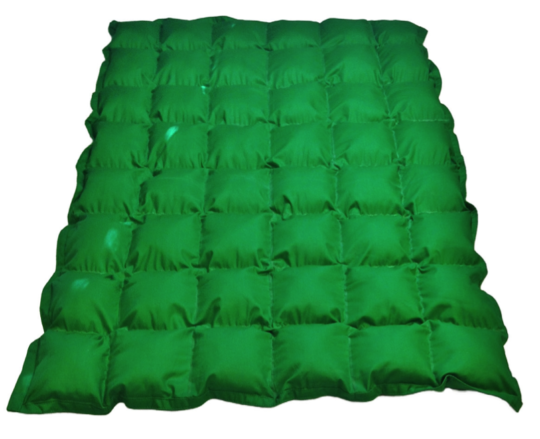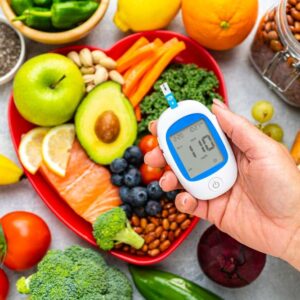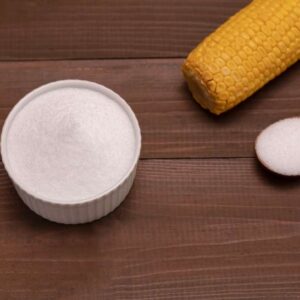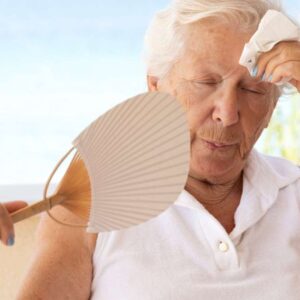
Increase Sleep and Reduce Anxiety With This Special Blanket
- Don’t go to bed with Big Pharma! Discover how this breakthrough blanket maybe just as effective as prescription drugs
- Perfect pressure can lead to calmer nights. Find out more…
- One ways to tuck yourself in for better sleep and lowered anxiety today!
Dear Living Well Daily Reader,
“Go get one of those new blankets off the linen cart, please. This patient really needs one. Oh, and take a friend. You’re going to need some help…”
A few years ago while working as a social worker, I filled in for a co-worker on the memory disorder unit. During my shift, we got a very agitated admission. This patient was anxious, combative and very confused.
In fact, on the night of her admission, she had become so violent at the nursing home where she lived she was placed in restraints so she could be transported safely to the hospital. But she never calmed down — not in the emergency room or on our unit. Well, not until she was tucked in under one of those new blankets.
You see, the charge nurse told me I needed a partner to get one of these new blankets because they were heavy. And not the kind of heavy meant for cold weather. These blankets weighed about 20 pounds each. But it wasn’t just their weight that was so shocking about them.
It was also the way this heavy blanket calmed the agitated patient very quickly. Actually, it kept her calm for most of her stay.
![]() Weighted Relief
Weighted Relief
This special blanket is called a “weighted blanket.” Weighted blankets typically use plastic or tiny glass pellets that are sewn into compartments. These compartments ensure that the weight is consistent throughout the blanket.

Weighted blankets can provide relief from a variety of debilitating disorders (we will get deeper into these in just a bit) without the use of pharmaceuticals. Plus, they are relatively cheap when compared with the costs of drugs and have few side effects.
These special blankets seem to work just as well as painstakingly designed and researched drugs because they tap into something humans have used to induce calm since the start of our existence — being held.
Studies indicate that stimulating certain pressure points on the body can release serotonin, the chemical that helps regulate brain functions like mood and sleep. This is why the feeling of being held is so important.
Native Americans famously transferred this idea into a practice called swaddling. Many hospitals, birthing centers and parents continue the practice today. In fact, just a few days ago, I watched a close friend swaddle his 3-week-old fussy daughter. In about two minutes, she was much calmer (and more receptive to me holding her).
[Ed note: I should mention that swaddling and weighted blankets can cause suffocation if not used with proper technique. Be sure to ask a health care professional if swaddling or weighted blankets are appropriate for your loved one before starting this practice.]
Internationally renowned autism authority and livestock researcher Dr. Temple Grandin explains why this pressure can change behavior quickly:
Light touch pressure is a more superficial stimulation of the skin, such as tickling, very light touch or moving hairs on the skin. In animals, the tickle of a fly landing on the skin may cause a cow to kick, but the firm touch of the farmer’s hands quiets her. Occupational therapists have observed that a very light touch alerts the nervous system, but deep pressure is relaxing and calming.
![]() Better Sleep, Less Anxiety
Better Sleep, Less Anxiety
But as my aforementioned example with my dementia patient proves, this kind of pressure provides comfort not just for babies and children. Studies have found that weighted blankets may have health benefits for other folks as well.
A study found that using a weighted blanket reduced the anxiety levels in 63 percent of the participants. This claim has been since supported by other papers.
Another study with participants who suffered from stress, pain and sleep issues showed that that when the subjects slept with weighted blankets, they experienced a reduction in cortisol. Reducing cortisol, which is the main stress hormone, can lead to better overall sleep quality.
In addition, weighted blankets have benefited folks with a variety of anxiety disorders, aggression, obsessive-compulsive disorder, ADHD and post-traumatic stress disorder with zero risk. This means, this simple blanket could be a better solution than mind-numbing psychotropic pharmaceuticals for many folks.
We had these blankets for six months on our geriatric and adult inpatient mental health units, and they were truly amazing. I saw how quickly these blankets could soothe an agitated or anxious patient. In fact, many of them would wrap themselves in the blankets during seated activities.
Unfortunately, we had these blankets only as part of a pilot program, and they were taken from both units. And even though most of the staff begged for their return, our director didn’t see their merit and blamed “budgetary” reasons for not purchasing more. The nights that followed were difficult for patients who had grown accustomed to the feeling of being “grounded” during sleep.
However, the staff continued to recommend them for to patients and families. And to our relief, many of them found weighted blankets to be a helpful addition to their health protocol.
If you’re interested in having a weighted blanket of your own, you can make one. Click here for a tutorial. The rule of thumb when selecting the appropriate weight is 10 percent of one’s body weight plus 1 pound.
If DIY isn’t your thing you can order one from Sensory Goods.
Click here to check out their selection of weighted blankets.
Live well,

Natalie Moore
Managing editor, Living Well Daily
Sources
[1] Take the load off with Weighted Blankets
[2] How Weighted Blanket Therapy Can Help Those With Anxiety, Autism, And More
[4] Sleeping With Weighted Blanket Helps Insomnia And Anxiety, Study Finds
Written By Natalie Moore
Natalie Moore is a dedicated health researcher with a passion for finding healthy, natural, and science-based solutions. After a decade of direct healthcare experience in western and natural medicine, she was involved in public health research before joining Living Well Daily.
View More Free Articles
This Sleep Mistake Is Doubling Your Disease Risk
Think your inconsistent bedtime is just a harmless habit? Think again. New research reveals that going to bed at different times each night isn’t just making you tired—it could be dramatically increasing your risk of serious diseases. But the key to making sure poor sleep doesn’t derail your health goals likely isn’t what you think…....
Stop Obsessing Over Diet Trends
Can we stop with the endless diet debates already? Every other week there’s a new headline shouting about which diet is best for weight loss, heart health, or diabetes. Paleo, keto, low-carb, high-protein… it’s exhausting. And now, a new meta-analysis is out comparing the Mediterranean diet, the DASH diet, and something called AHEI (that’s “Alternative...
A New Reason to Ditch Processed Junk
If you’ve ever walked the inside aisles of your local grocery store and thought, “This is all just junk,” your instincts were spot on. A new study published in the journal Thorax just added another red flag to the list of dangers linked to ultra-processed food—a 41 percent higher risk of lung cancer. That’s right....
When Being Winded on Stairs Is Serious (And When It Isn’t)
I had an athlete visit me recently because he experienced shortness of breath while climbing stairs. He is in great shape, so he was worried about what it might mean. “Doc,” he said, “I run five miles three times a week. Why am I huffing and puffing after two flights of stairs?” His concern is...
Study EXPOSES Hidden Danger Lurking in Your Car
We think of our homes and cars as safe havens. But according to a startling new study, they may be flooding your lungs with microscopic plastic particles—every single day. Researchers in France recently found that adults inhale an average of 68,000 microplastic particles daily from indoor air alone. To put that in perspective, that’s about...
Mailbag: Is Modern Food Making You Snore?
“What can cause snoring, and is there a way to correct this issue?” —Seeking Silence Hi Seeking, Snoring happens when the soft tissues in your throat relax and vibrate as air passes through during sleep. While several factors can cause snoring—from sleep position to nasal congestion—I want to share one trigger that might surprise you....
Simple Food Swap SLASHES Dementia Risk 28%
Let’s be honest… who would jump at the chance to cut their dementia risk by 28 percent. And no, you don’t need to run marathons, survive on broccoli, or learn to play the zither (whatever that is) to make it happen. All it takes is one easy swap—something that’s probably already in your refrigerator. Researchers...
This SMART Floss Exposes Hidden Health Danger
Scientists have created dental floss that doesn’t just clean between your teeth—it also tracks your stress while you’re flossing. Now, I know what you’re thinking… “Great—now even flossing is going to stress me out by telling me how stressed I am.” But this fascinating new tool from Tufts University could be a game-changer for understanding...
Is This "Safe" Sweetener Damaging Your Brain?
The headlines are alarming… “Popular Sugar Substitute Linked to Brain Cell Damage” and “Erythritol Could Damage Critical Brain Barrier” are just two of the dozens I’ve spotted recently. But before you toss every sugar-free product in your pantry, let’s take a closer look at what this study actually shows—and what it doesn’t. The latest research...
This Summer Threat Could SPIKE Your Blood Sugar
Picture this… It’s another scorching hot summer day. You crank up the air conditioning while watching the weather forecast, which predicts yet another “record-breaking” heat wave. It’s starting to feel like just another miserably uncomfortable summer. But what you might not realize is that—if you have diabetes—those rising temps could do far more damage to...









